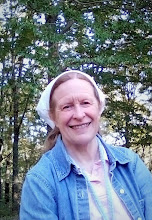Favorite book or no, three copies is too many, so we said not to worry, that we'd just read this one and then sell it.
Wrong. We're reading it, and will keep it. I have a fondness for tales of the early days of aviation anyway, and this one is a good read, besides. (At least it is up through Chapter 6, which is as far as I've gotten.) Taylor, an Australian, was one of the big pioneers of flight. Among other things he was instrumental in developing workable navigation systems for aircraft. He was also a keen observer of men and machines.
Here's a taste, from Chapter 3:
The Sky Beyond has a copyright date of 1963. My copy is a Ballantine Books paperback, published by arrangement with Houghton Mifflin Company, first printing August 1970. I understand that it was later published by Bantam as part of its Air and Space series. For all that, though, it's awfully hard to find a copy (and we've just taken another out of circulation). May I suggest that somebody reprint it?To carry the experiments on to the next phase I bought a de Havilland Moth twin-float seaplane. I had never flown a seaplane but had heard that the take-off was only for special beings called seaplane pilots; that only by some sort of involved technique denied to ordinary mortals could a waterborne airplane be persuaded to become successfully airborne.
Firmly believing this to be true, I made various inquiries of people who at some time or other had flown seaplanes, and with natural caution checked the advice of each expert against the others. All differed in some important respect. The only point upon which agreement was unanimous was that without this special knowledge of how to take off from the water, disaster was certain.
I was so confused by all this that I took the seaplane out on a good open stretch of water and, ignoring all conflicting advice on the subject, steadily pressed the throttle forward and went with the airplane, which I believed knew more about it than I did. It ran a reasonable distance and with light backward pressure on the control column became airborne quite smoothly and definitely. There were, I later discovered, some refinements to this procedure, to meet different sea conditions and the demands of different airplanes to them; but on the whole the thing turned out to be governed by the normal laws of behavior of a flying machine.
The operations of this seaplane had to be made to pay, to cover the economic facts of life: so I flew it to remote lakes and harbors where there were enough people to provide some traffic for passenger flights. I did the maintenance myself and, to economize on personal expenses and to live as I liked, I camped with my dog on the edge of accessible but, as far as possible, uninhabited lakes. A large Alsatian, he was the most good-tempered fellow, with traditionally good manners, but his formidable appearance was a strong deterrent to anybody with ideas of interfering with the airplane if I happened to be away fishing.
He loved the flying and, like all dogs in a car, liked to put his head out the side into the wind from the front seat, in which he traveled; but finally he would get disgusted with the force of the airstream and would just curl down in the seat and go to sleep. The only trouble I had was to teach him to jump out of the cockpit onto the plywood walkway alongside the fuselage and not to put his feet through the fabric of the wing when we came to anchor...

No comments:
Post a Comment